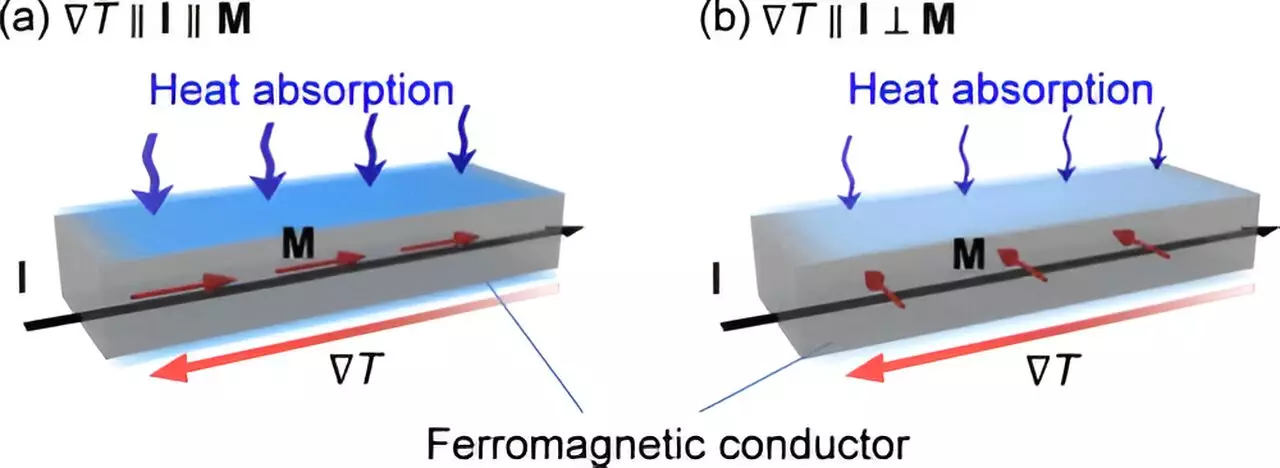In a groundbreaking study, the National Institute for Materials Science (NIMS) has made a significant advancement in the field of physics and materials science by directly observing the “anisotropic magneto-Thomson effect.” This phenomenon, which involves the heat absorption and release in magnetic materials changing based on the magnetization direction, has implications for the fusion area of thermoelectrics and spintronics. The study, published in Physical Review Letters, sheds light on the interplay between thermal energy and magnetism, opening up new possibilities for controlling thermal energy. This article explores the key findings of the research and its potential implications.
The Thomson effect, along with the Seebeck and Peltier effects, is considered one of the fundamental thermoelectric effects in metals and semiconductors. While the influence of magnetism on the Seebeck and Peltier effects has been extensively studied, little is known about how magnetic fields and magnetism affect the Thomson effect. One of the reasons for this knowledge gap is that the thermoelectric conversion of the Thomson effect is generally small, and there are limitations in measuring and quantitatively estimating it. However, NIMS previously reported an experimental result in which the Thomson effect in nonmagnetic conductors was observed to change with a magnetic field, known as the magneto-Thomson effect.
Building on their previous findings, the NIMS research team used a precise thermal measurement technique called lock-in thermography to observe the anisotropic magneto-Thomson effect in magnetic materials. The researchers focused on a ferromagnetic alloy, Ni95Pt5, and measured the temperature distribution generated when a charge current was applied while applying a temperature difference. By varying the magnetization direction, they were able to verify how the Thomson effect changed.
The research revealed that the amount of heat absorption or release generated in the Ni95Pt5 alloy is greater when the temperature gradient and charge current are parallel to the magnetization compared to when they are perpendicular to it. This result aligns with the behavior observed in measurements of the Seebeck and Peltier effects in magnetic materials. It represents the first direct observation of the unexplored phenomenon of the anisotropic magneto-Thomson effect in magnetic materials, distinguishing it from the conventional magneto-Thomson effect in nonmagnetic materials.
This breakthrough study has contributed to a better understanding of the fundamental properties of the anisotropic magneto-Thomson effect. By establishing techniques for its quantitative measurement, the researchers have opened the door to further investigations into the physics, materials, and functionalities of this phenomenon. The interaction between heat, electricity, and magnetism presents exciting possibilities for new physics discoveries and the development of thermal management technologies that can enhance efficiency and energy conservation in electronic devices.
The National Institute for Materials Science’s recent research on the anisotropic magneto-Thomson effect unveils a remarkable interaction between heat, electricity, and magnetism in magnetic materials. By directly observing and quantitatively measuring this effect, the study provides a solid foundation for future explorations in the fusion area of thermoelectrics and spintronics. The findings pave the way for the development of innovative applications in thermal management and contribute to enhanced efficiency and energy conservation in electronic devices. As researchers continue to delve into the rich possibilities of the anisotropic magneto-Thomson effect, exciting breakthroughs and discoveries await in the field of materials science and beyond.


Leave a Reply